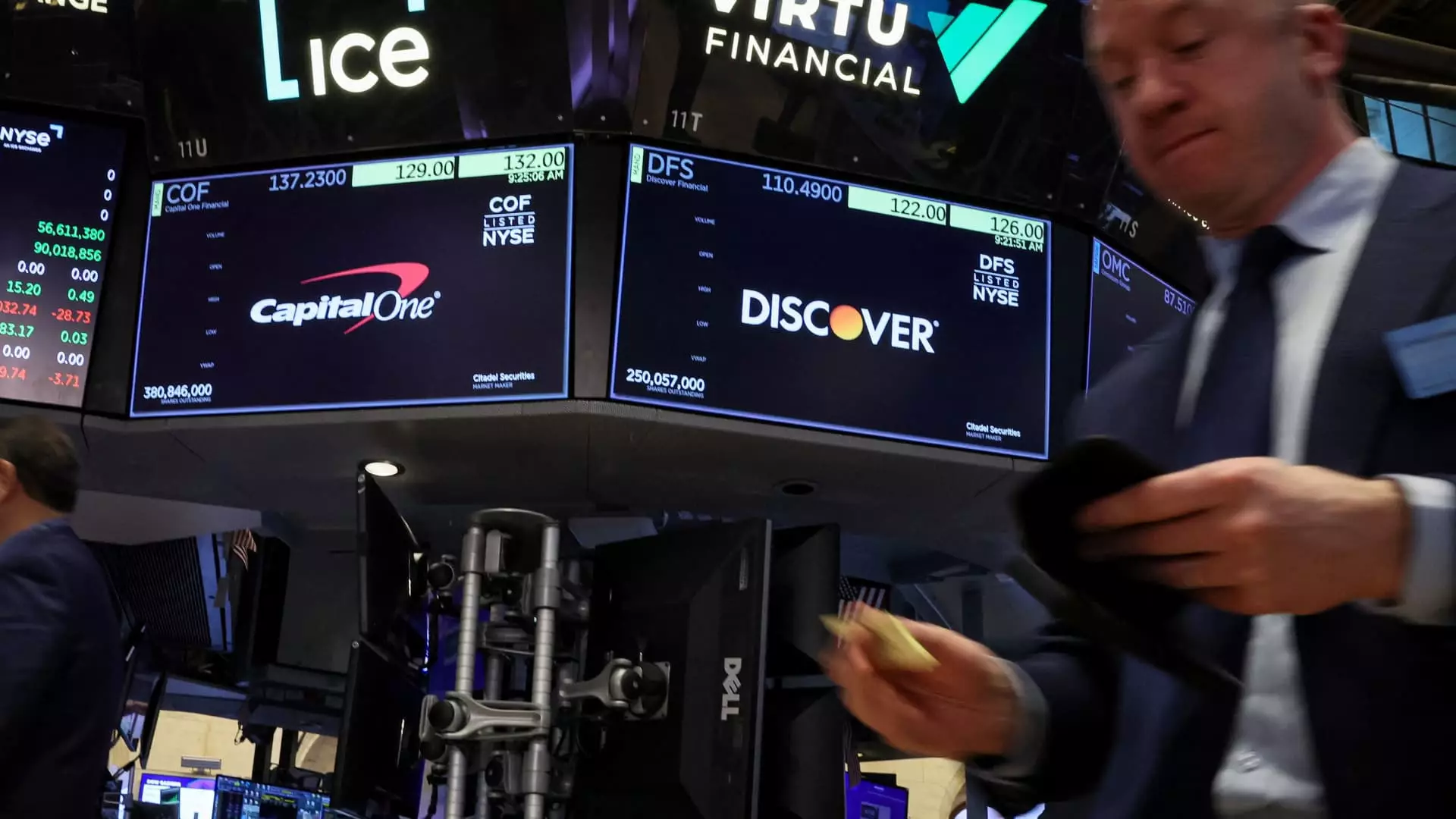The financial landscape is bracing itself for a potential seismic shift should Capital One’s proposed merger with Discover Financial Services clear the regulatory hurdles in its path. Analysts from BTIG have set an astonishing price target of $427 for Capital One’s shares, suggesting a jaw-dropping upside of over 137% from its recent trading values. Such bold projections raise eyebrows and signal that the potential of this merger is not just a fanciful hope but a plausible outcome based on substantial market factors.
This merger isn’t merely a corporate transaction; it’s a strategic alignment that could fundamentally enhance Capital One’s competitive edge in the saturated credit card arena. The analysts highlighted the “significant earnings power” that the combined resources of Capital One and Discover could unlock, particularly in capturing market share from prime transactor credit card users. It’s a potent reminder that consolidation often leads to more innovation and efficiency, potentially benefiting consumers and investors alike.
Solid Fundamentals Amidst Regulatory Scrutiny
Even as excitement builds around the merger, resistance looms on the regulatory front. Concerns raised by the Justice Department regarding the potential concentration of power in the subprime credit card market have cast shadows over the deal’s prospects. However, Capital One remains undeterred, insisting that the merger meets legal requirements and is “well-positioned” for approval. The response from Capital One is a testament to its resilience and strategic thinking.
While the bearish whispers around antitrust concerns create a backdrop of uncertainty, it is crucial to understand that these obstacles are not insurmountable. Other financial institutions like Citi and Jefferies are maintaining their faith in the merger, indicating that concerns could be mitigated to strike a favorable outcome. In an environment where patience and adaptability are paramount, Capital One’s proactive stance must be both encouraged and esteemed.
Capital One: Strong Alone, Even Stronger Together
Intriguingly, even if the merger falters, BTIG’s analysts project a standalone price target of $208 per share for Capital One, suggesting a respectable 15% upside. This reflects an inherent strength within Capital One, one that has been fortified over recent years. The accumulation of excess capital since the merger was first announced underscores the financial institution’s robust outlook, further solidifying its sustainability in turbulent markets.
Moreover, this financial cushion equips Capital One with the opportunity to repurchase up to $25 billion in stock over the next three years, a move that could see a 12% increase in earnings per share. This strategic play alone positions Capital One favorably, especially compared to its competitors, including American Express and Ally Financial. The prudent decision to tighten underwriting standards a few years back showcases the company’s foresight, feeding into a narrative that investors should be immensely optimistic about.
A Rebound in Stock Performance
Recent market activities reveal a rebound in Capital One’s stock, which has displayed resilience despite initial sell-offs following the anti-trust concerns. Following a dip, shares have regained nearly 6%, illustrating a recovery that may signal market confidence. This adaptive strength bears testament to the overall health of the company amidst the chaos of external pressures: a rare trait in corporate America today.
The comparisons drawn between Capital One and its larger rivals, Visa and Mastercard, underscore a competitive landscape replete with challenges. However, tapping into Discover’s payment network could allow Capital One to navigate these choppy waters more effectively. The potential for reduced transaction fees and expanded market access can’t be underestimated; it’s not just about scale, but about the technological efficiencies that could emerge.
The Broader Implications of Consolidation
From a broader perspective, this proposed consolidation between Capital One and Discover is reflective of changing paradigms within the financial industry. As digital transformation accelerates, companies must adapt not just to customer preferences but also to the regulatory frameworks that define modern finance. The pressures of compliance are real, and evolving to meet these demands can often mean the difference between success and failure.
Yet this merger speaks to a larger truth about the industry: that when companies pool resources and share technological innovations, the result can empower them to not only survive but thrive in an increasingly complex marketplace. While some tout the risks of a few entities garnering too much control over consumer credit, true progress comes from carving out new pathways through innovation and cooperation, rather than fragmentation.
This unfolding drama, punctuated by potential breakthroughs and regulatory roadblocks, emphasizes the necessity of strategic acuity in today’s financial world. Whether navigating consumer concerns or regulatory bodies, companies like Capital One are at a crossroads, prepared to either redefine their trajectories or manage their existing positions with grit and resilience.

